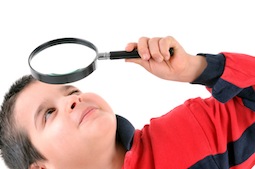
Entering elementary school is a big step for children, a true rite of passage. I can still remember my very first day of school, how excited I was to join my big sister on the bus, how much I loved the little containers of milk and my teacher’s bouffant hairdo! I made a best friend that day—and was confounded by the “K-I-S-S-I-N-G” song kids sang on the bus. By the time I hit third grade, though, I knew what to expect. I was a real “big kid” (and old enough to know not to call myself one).
Kindergarten can look a lot like preschool to a non-educator, but nobody would mistake a third grade classroom for a preschool. For one thing, the chairs are bigger! But more important, the students are socially, emotionally, and cognitively quite different. At first glance, the K-3 CLASS measure looks a lot like the Pre-K CLASS tool: same dimensions, same indicators, and same behavioral markers. But the interactions look quite different.
Take Language Modeling and the advanced vocabulary indicator. A preschooler might say turtles live in the pond, and the teacher might say, “Yes, that’s the turtle’s habitat, its home.” A third-grade teacher would also map vocabulary using familiar words—but the familiar vocabulary as well as the target new word might be more complex. For example, a teacher might say, “We’re going to study habitats. Habitats are the different environments that animals live in, the places they feel most at home. Some turtles’ habitats are in lakes or ponds. Sea turtles live in the ocean, and box turtles live in the woods, but a sea turtle can’t live in the woods and a box turtle can’t live in the sea. They need their special habitat to survive.” Both teachers are mapping vocabulary to help children expand their language skills, but the complexity of the language progresses from pre-K to grade 3.
The CLASS manuals reflect this difference (check out those long descriptions in the manuals), so, while the vocabulary of the two tools is the same, the interactions they describe are (sometimes subtly, sometimes markedly) different, reflecting the growing maturity that occurs as children progress through school.
Watch these videos to see what language mapping looks like at the two age levels:
- Pre-K video: Mapping Bull and Bulldog at Story Time
- K-3 video: Asking Open-Ended Questions during a Lesson on Migration

